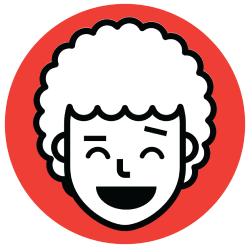Parents - if your child is experiencing frustration learning how to calculate percentages, work through these tips with them. Children usually start learning some basic percentage skills in fourth grade (calculating 10%, 50%, 75% and 100%). 5th graders and 6th graders continue to develop their skills. And percentages are "real" life math skills.
Imagine you’re in your favorite store and you see a “clearance” section. The sign says “30% off last marked price.” You see a shirt you would really like to buy. You only have $10 to spend. The last marked price was $16. You scratch your head, wondering if you can buy the shirt.
This is a classic percentage problem. What is 30% of 16? You suddenly wish you had paid more attention in math class.
Tip #1 Think of the word “percent.” Per means “of” and cent means "100". So “percent” means “of 100” or “divided by 100”. 30% of 100 is 30 and 15% of 100 is 15. If the shirt was last marked $100 the sale price would be $70. ($100-$30= $70) To remember this tip think of 100 cents in a dollar. 1 percent of one dollar is one cent.
Tip #2 Learn to approximate percentages using fractions. Sometimes an approximation is good enough, other times it will help you check your answer for reasonableness. This technique requires two fundamental skills:
Proportional Thinking and Wholes and Parts
100% = 1 whole
75%= ¾
50%= ½
33.33 % = 1/3
25%= ¼
10% = 1/10
Let’s go back to the example of the clearance rack.
30% is between 25% and 33.33%. The shirt is between ¼ and 1/3 off. 1/4 of 16 is 4 and 1/3 of 16 is a little more than 5. That means 30% is between 4$ and 5$. 16$-5$ =$11. You only have $10 so you can’t buy the shirt.
Tip #3 Usually you need to calculate percentage exactly. Remember 30% means “divided by 100”.
So, 30%=30/100=.30 =.3
Mentally calculate 16 x .3.
15 x 3= 45 therefore16 x 3 = 48 so 16 x .3 = 4.8 so 30% of 16 is 4.8.
Tip #4 Breakdown the word percent the Mathnasium way! We think of per as meaning “for each” (such as in miles per gallon or dollars per hour) and cent is the root word for “100.” At Mathnasium, then, per cent means “for each 100.” In the case of a problem like “What is 16% of 475?” you have 16 for the first 100, 16 for the second 100, 16 for the third 100, 16 for the fourth 100 and then 3/4 of 16 or 12 for the 75. Adding them all up, the answer is 76! Cool! This works really well for straightforward percentage problems such as 7% of 300, 9% of 450, 8 1/2% of 200, 14% of 425, etc. and allows the student to quickly calculate the answer mentally. The other tips are useful for less friendly calculations.
If you want to learn other “tricks” for making math fun and easy, come into Mathnasium of Littleton for a FREE 60-minute tutoring session!
If mental multiplication is difficult, check out our new Multiplication Boot Camp or ongoing multiplciation fluency program. Either will help a lot with percentages, because calculating percentages usually requires some multiplication. That $16 shirt on 30 % clearance would cost exactly $11.20 … until you add on tax.
Children in 5th grade or above, who don’t like percentages, are probably using an algorithm or formula, they don’t understand or can't remember. Break their dependence on the algorithm (and help them remember it better because they understand it) by getting them the help they need.
If your child is learning percentages now, call us at 303-979-9077 to learn more about how we teach percentages and other skills at Mathnasium of Littleton. We Make Math Make Sense.

 877-601-6284
877-601-6284 877-601-6284
877-601-6284















